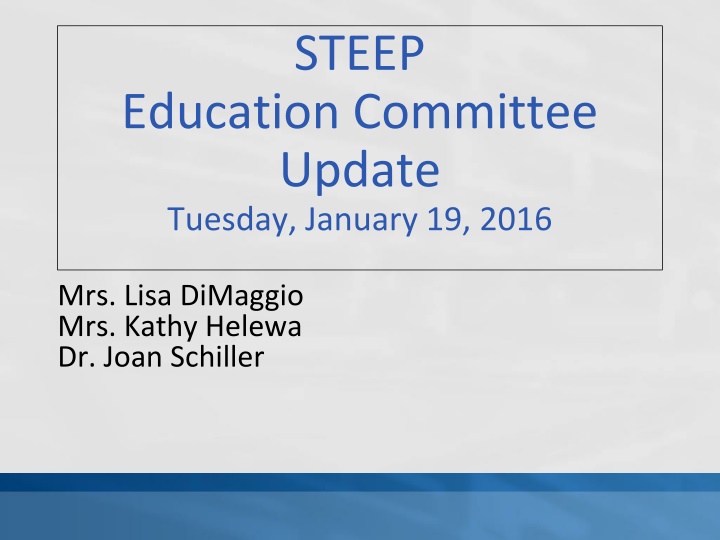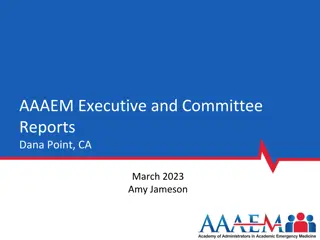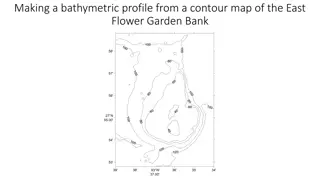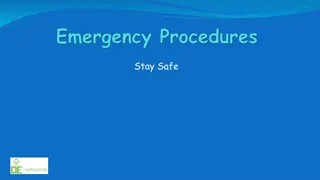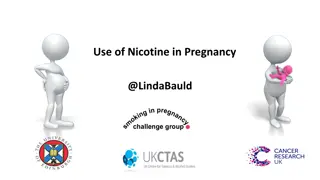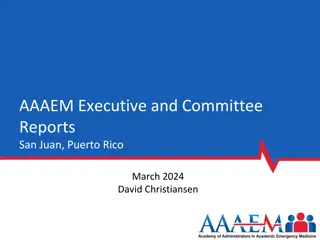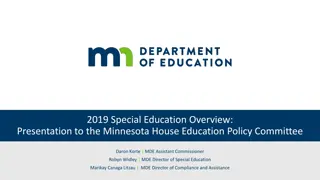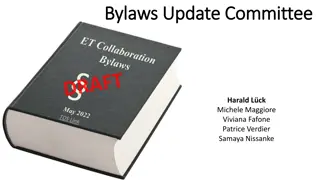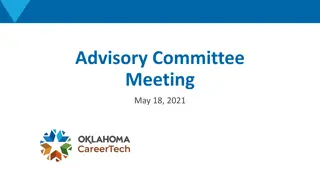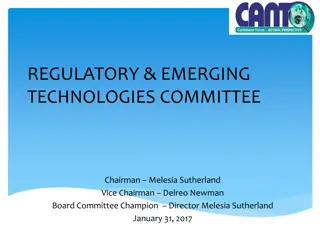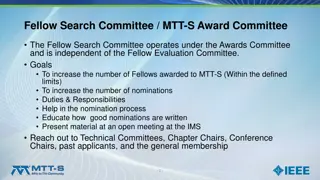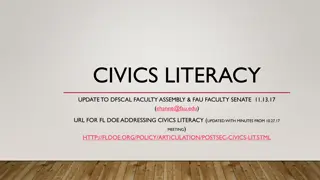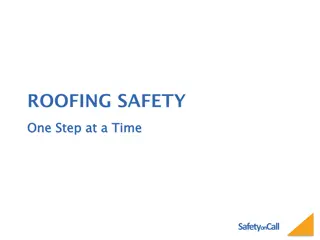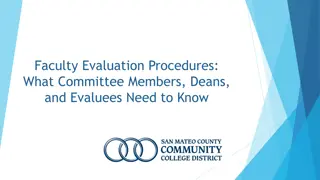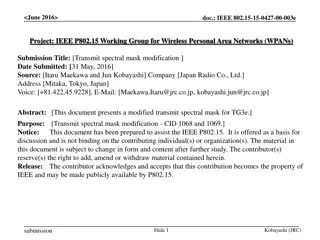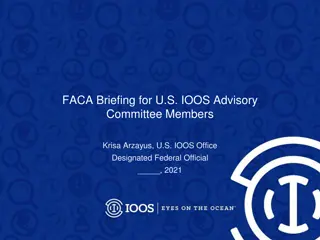STEEP Education Committee Update and Process Overview
The STEEP Education Committee is focused on evaluating different school configuration models to enhance education quality, social development, and emotional well-being of students in Warren Township School District. The guiding philosophy emphasizes academic excellence, social growth, and a lifelong passion for learning. The process involves meetings, interviews, and thorough research conducted by various staff members to gather insights and perspectives. Alternative models and original configurations are being reviewed to determine the most effective approach for the district.
Download Presentation

Please find below an Image/Link to download the presentation.
The content on the website is provided AS IS for your information and personal use only. It may not be sold, licensed, or shared on other websites without obtaining consent from the author.If you encounter any issues during the download, it is possible that the publisher has removed the file from their server.
You are allowed to download the files provided on this website for personal or commercial use, subject to the condition that they are used lawfully. All files are the property of their respective owners.
The content on the website is provided AS IS for your information and personal use only. It may not be sold, licensed, or shared on other websites without obtaining consent from the author.
E N D
Presentation Transcript
STEEP Education Committee Update Tuesday, January 19, 2016 Mrs. Lisa DiMaggio Mrs. Kathy Helewa Dr. Joan Schiller
Our Guiding Philosophy: Our Districts Mission Statement The Mission of Warren Township School District is to provide, through a nurturing, yet challenging environment, all students with an outstanding education that fosters academic excellence, healthy social and emotional development, and a lifelong passion for learning. In partnership with family, community, and staff, our strategic goals will guide our programs and actions so that students can exceed the New Jersey Core Curriculum Content Standards at all grade levels and leave the district confident in their ability to think critically and independently and to succeed as students and productive citizens of the community and world.
Education Committee Goal: To determine the educational, emotional and social advantages and disadvantages of each of the four configuration models, and any other alternatives uncovered throughout our data collection and research.
The four orignial models as presented by Dr. Nastus and Ms. Campos: Model 1: Current structure: 4 K-5 schools, 1 6-8 school; no change. Model 2: Close one school, leave configuration the same. Model 3: Close one school, reconfigure grade levels. Model 4: Close a school, unduplicated grade levels. Alternative models offered: Model 5: Move 5thgrade to WMS, joining 6th grade; 7th and 8th grade remains the same. Model 6: Move 6th grade back to respective elementary schools; thereby creating K-6 district wide elementary schools.
Process: Meetings and Interviews, coupled with research. Administrators Teachers Curriculum Specialists Guidance Special Education Paraprofessionals Total number of staff involved in interviews: 86
ALT MH Central Woodland Middle Administration Central Office Monday December 7th, 2015 @9am. Wednesday December 9th @ 9am Thursday December 10th, 2015 11am Tuesday December 8th, 2015 @9am Tuesday January 19th, 2016 K. Helewa Monday, December 14th, 2015 @3pm Friday, December 11th, 2015 @3pm Friday, December 18th, 2015 @3pm Thursday December 17th, 2015 @3pm Friday, January 15th, 2016 @3pm Friday December 4th, 2015 @ 3pm Jan27th, 2016 @3:15 L. DiMaggio Thursday, December 3rd, 2015 7:30 am Tuesday, December 8th, 2015 @ 8 am Monday December 7th, 2015 @ 8am Friday December 4th, 2015 @ 8am Friday January 15th, 2016 @ 8am J. Schiller Wednesday, December 16th, 2015 @3:15 (Mr. Kimmick and Mrs. Hengemuhle) K. Helewa & L. DiMaggio Dr. Nastus TBA Ed. Comm.
Information listed below reflects data collection results: Re-Occurring themes during our listening tours : Stability Security Class size Role models Excellent curriculum/programs Rigor Travel time Siblings together Parental involvement Professional development Grade level articulation
Next Step: 1. Create and post an online survey for teachers, para- professionals and administrators in order to collect data on how each of them rank each of the Re- occurring Themes .
In Conclusion, here is some food for thought . If you think education is expensive, try ignorance. Derek Bok, former president of Harvard
Abella, R. The effects of small K-8 centers compared to large 6-8 schools on student performance. Middle School Journal, vol. 37, 2005. Alspaugh, J.W. Achievement loss associated with the transition to middle school and high school. Journal of Education Research, vol. 92, 1998 Alspaugh, J.W. and Harting, R.D. Transition effects on school grade-level organization on student achievement. Journal of Research and Development in Education, vol. 28. 1995 Chingos, Matthew and Whitehurst, Grover. Class size: what research says and what it means for state policy. Brookings institution, May 11, 2001. Chingos, Matthew. The false promise of class size reduction. The Center for American Progress, April 2011. What research says (or doesn t say) about K-8 versus middle school grade configurations. Education Northwest, August 18, 2011 Gregg, Kathy. Elementary grade span configuration: new evidence on student achievement, achievement equity, and cost efficiency. Report to the Prospect Heights School District 23] Board of Education, Grade Level Center Feasibility Study, February 4, 2003 Hough, D.L. Grade span does make a difference. Policy brief for Missouri State University, Institute for School Improvement, Springfield, MO. December 2004. McEntire, Nancy. Grade configuration in K-12 schools. Early Childhood and Parenting Collaborative, University of Illinois at Urbana-Champaign. 2002. Moffitt, Thomas Lawson III. An evaluative study of the impact of elementary grade span structure on family- school partnerships. Doctoral dissertation, Miami University. 1996 Rivkin, Steven, Hanushek, Eric A., Kain, John F. Teachers, schools, and academic achievement. Econometrica, vol. 73, March 2005. Woessmann, Ludger and West, Martin R. Class-size effects in school systems around the world: evidence from between-grade variation in TIMSS. European Economic Review, vol. 50, 2005. Offenberg, R.M. The efficacy of Philadelphia s K-8 schools compared to middle schools. Middle School Journal, vol. 23, 2001.
